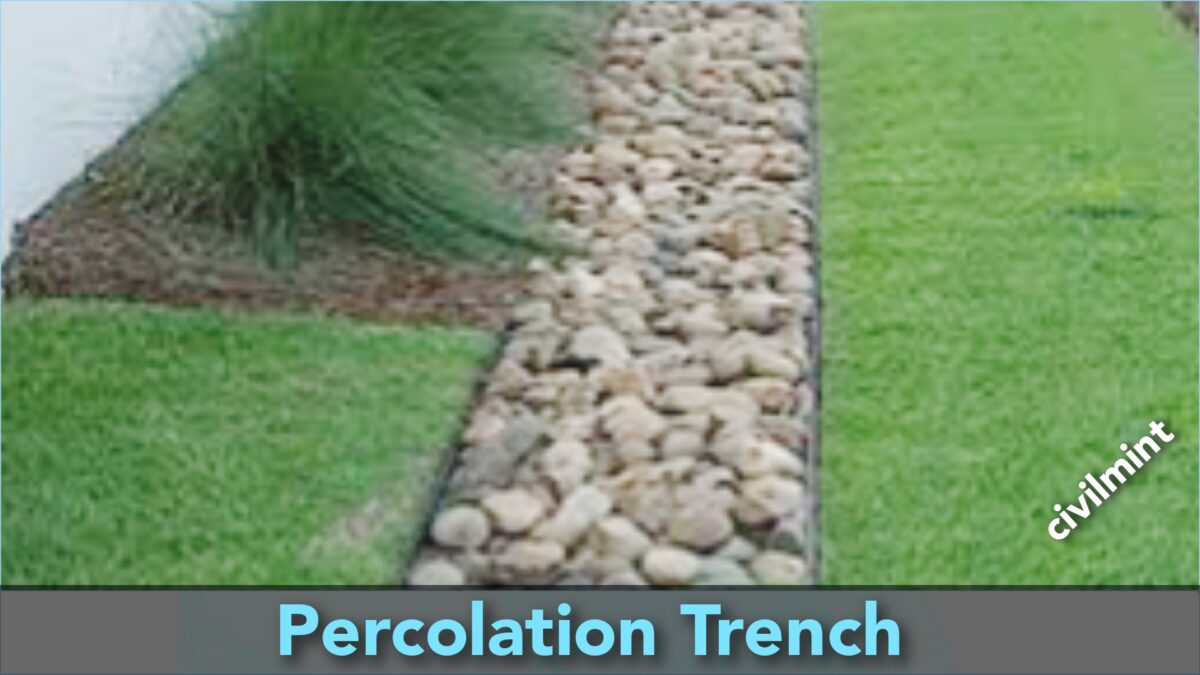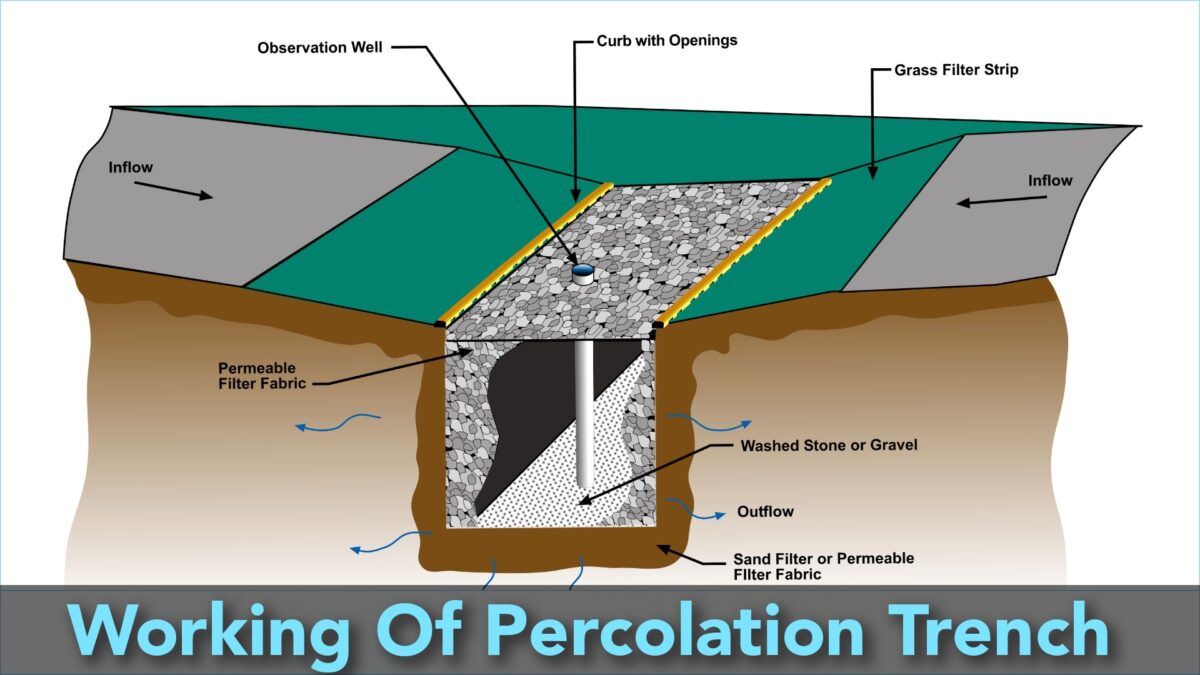Table of Contents
Percolation Trench Meaning
Percolation trench, also known as an infiltration area, manages stormwater runoff and recharges groundwater in an environmentally friendly and effective way. It filters and cleans water as it enters the ground, promoting healthier soil and improving water quality in nearby bodies of water.

Gravel or crushed stone fills the trench, slowing down water flow and preventing flooding. This natural filter removes pollutants and debris from water, improving water quality. Percolation trenches blend in well with landscaping and can be aesthetically pleasing.
Working Concept
Areas with high levels of impervious surfaces, such as parking lots, roads, and rooftops, benefit from percolation trenches by managing stormwater runoff and recharging groundwater. They can reduce the risk of flooding and erosion, promoting a healthier environment.

Compared to other exterior waterproofing systems, percolation trenches are an affordable and effective solution. They also manage water waste from household sources, such as flushing the toilet, taking showers, and using washing machines.
Percolation trenches prevent downstream erosion and keep soil particles in place, helping with erosion control. These systems are effective for residential, commercial, and industrial developments and can meet specific site conditions and regulatory requirements.
Purpose Of Percolation Trench
The percolation trench aims to collect the runoff and enable it to slowly seep into the soil. A permeable material like gravel typically fills the trench, allowing the water to percolate through it and into the earth beneath. As the soil filters and purifies the water, it extracts pollutants and reduces the amount of runoff entering streams, rivers, and other water bodies.
Percolation trenches effectively control stormwater runoff and can prevent erosion, flooding, and water pollution. They frequently find use in urban and suburban areas where impervious surfaces are prevalent, and they can be customized to suit various site conditions and drainage requirements.
Uses
- Homeowners can use percolation trenches to manage stormwater runoff from their property’s impervious surfaces, such as rooftops and driveways.
- Businesses can incorporate percolation trenches as part of their stormwater management system to collect and infiltrate runoff from large parking lots and rooftops.
- Percolation trenches installed alongside roadways can capture and infiltrate stormwater runoff, which helps to reduce the amount of runoff that flows into nearby waterways and prevents erosion and flooding.
- Wetland restoration projects can benefit from the use of percolation trenches, as they help enhance water infiltration and promote the growth of native wetland plants when installed at the edges of wetlands.
- In agriculture, farmers can use percolation trenches to manage soil moisture levels and reduce erosion by capturing and infiltrating excess water from irrigation and rainfall in their crop fields, orchards, and vineyards.
